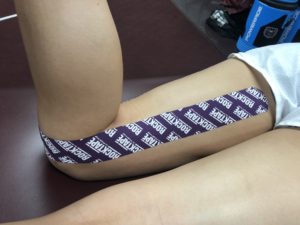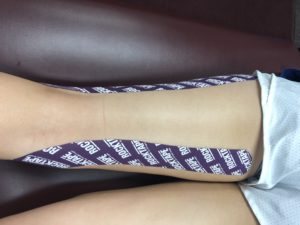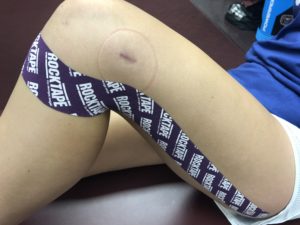by Mitch Hauschildt, MA, ATC, CSCS
Last week I evaluated a college freshman who is entering her first year of soccer after having tearing her ACL twice in the same knee in the past 16 months. Upon evaluation of her knee that is about 3 months post ACL reconstruction (her second surgery), she still has grade 2 laxity on that knee. Meaning, the surgical procedure that was performed to stabilize her knee, hasn’t worked for the second time. Her physical exam shows that the graft is intact, but it is very loose, leaving her knee unstable and exposing her to injury if she continues to try to play. This poor young woman has had horrible luck at best and poor care at its worst. I’m honestly not sure where the truth lies there, but it doesn’t really matter at this point.
We are continuing with testing and getting the opinions of our surgeons to determine the best route forward, but in the mean time, I am charged with making the best out of a bad situation.
 One of her complaints is that her knee feels unstable. She feels it shifting as she moves throughout her daily activities, which of course is expected. She has had good therapy up to this point because her strength is good and she is fairly stable when you ask her to do controlled movements. But, she needs more help to improve her sense of stability with more active and dynamic movement patterns. As usual, I grab my roll of Rocktape as my go to modality for up regulating stability and motor control.
One of her complaints is that her knee feels unstable. She feels it shifting as she moves throughout her daily activities, which of course is expected. She has had good therapy up to this point because her strength is good and she is fairly stable when you ask her to do controlled movements. But, she needs more help to improve her sense of stability with more active and dynamic movement patterns. As usual, I grab my roll of Rocktape as my go to modality for up regulating stability and motor control.
One of my major goals for her is to maximize the effectiveness of her hamstring group. When they turn on, they pull the tibia back into the knee joint and prevent anterior translation. The ACL is also responsible for preventing anterior translation of the tibia in the knee joint. So, when trained properly, the hamstrings can unload the ACL.
 The taping application that I chose for her is a single, long piece of tape. I placed her on her stomach with the knee bent to 90 degrees. In this position, her hamstrings are active and the tibia is well seated in the joint. I am treating this application as a postural correction so putting the joint in an “optimal” position is important for improving her function.
The taping application that I chose for her is a single, long piece of tape. I placed her on her stomach with the knee bent to 90 degrees. In this position, her hamstrings are active and the tibia is well seated in the joint. I am treating this application as a postural correction so putting the joint in an “optimal” position is important for improving her function.
Find the middle of the tape and place it directly over the tibial tubercle. Next bring one end up the tape around the medial side of the knee and place it directly over the medial hamstring tendon and up the medial hamstrings. Do the same on the lateral side so the tape is symmetrical. Lay the tape on the skin with no stretch.
The application is effective because when she straightens the leg, she feels the stretch on the tape, which encourages the hamstrings to pull the tibia into the joint, thus unloading the ACL. This patient noticed an immediate improvement in her stability and motor control with all activities while wearing this application.
Now the real work begins. Tape is always a means to an end and is designed to be something to help accelerate the motor learning and corrective exercise process. Train the hamstring group to work eccentrically and stabilize the knee.
This application isn’t for every patient, but for those who are ACL deficient or those who have excessive laxity in their knee are great candidates for this type of tape.


What are your go to eccentric hamstring exercises as well as your go to eccentrics for patellar tendinitis?
I utilize a lot of RDLs, Good Mornings and Lunge variations for my hamstring work. As for Patellar Tendonopathy, I personally don’t utilize a lot of eccentrics for those patients. I find that they typically have a mobility or stability issue elsewhere in the chain. I find a lot of trunk stability problems with those patients as well as anterior hip and quad mobility issues so I start with those issues first.